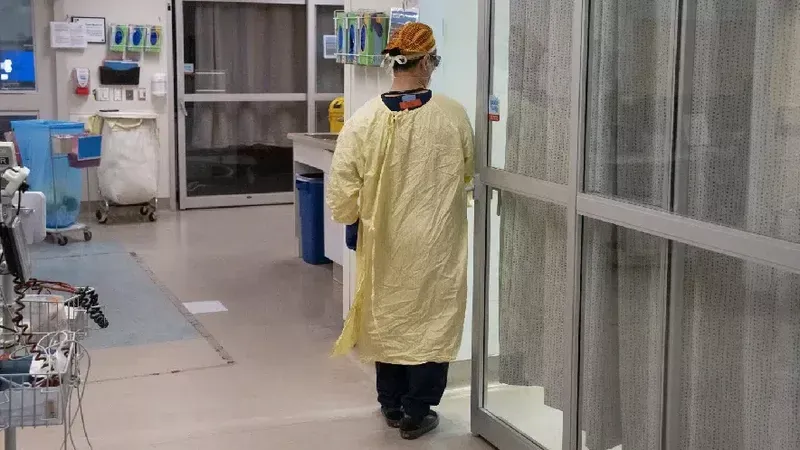
Breakthrough at U of S: New Discovery Could Revolutionize Sepsis Treatment
2025-09-14
Author: Benjamin
A Lifesaving Discovery in the Fight Against Sepsis
Sepsis, a severe and often deadly response to infection, is the leading cause of death in hospital intensive care units worldwide. However, researchers at the University of Saskatchewan are on the brink of a major breakthrough that could change everything for sepsis patients.
Unlocking the Secrets of a Key Protein
Dr. Scott Widenmaier, an associate professor in the College of Medicine, has pinpointed a specific protein that may be crucial for enhancing the body’s defense against this life-threatening condition. By manipulating this protein, they hope to develop new strategies to safeguard patients from sepsis, which ensues when the immune system's battle against infection mistakenly harms the body.
The Impact of Sepsis on Organ Function
"When sepsis strikes, it can wreak havoc on vital organs like the heart, kidneys, and lungs," warns Widenmaier. "It also jeopardizes liver function, hindering the body's ability to manage infections effectively." Traditional approaches focus on treating the underlying infection, but this innovative research suggests a shift in focus: harnessing the body's inherent mechanisms to enhance disease tolerance.
Harnessing Disease Tolerance: A Game Changer?
Widenmaier's team identified a liver protein known as NRF1, described as a "molecular switch" for regulating the immune response. When produced in excess, NRF1 prompts the liver to release very low-density lipoprotein (VLDL), a protective agent for organs against sepsis damage. Experiments showed that increasing NRF1 levels significantly bolstered infection responses and offered better protection against the dangers of sepsis.
A New Frontier in Treatment
The findings from this groundbreaking research have been published in *Cellular and Molecular Gastroenterology and Hepatology*. Widenmaier expressed enthusiasm about exploring pharmacological or genetic methods to manipulate NRF1, aiming to advance health outcomes further. With plans to collaborate closely with clinicians, there's hope that this research will lead to tangible benefits for patients.
What's Next for Sepsis Research?
While clinical trials remain a future goal, Widenmaier and his dedicated team are eager to dive deeper into this promising area of study. Their next step involves assessing the viability of this new therapeutic pathway and determining its effectiveness in conditions where sepsis is prevalent. This discovery could hold the key to a brighter future in sepsis treatment—potentially saving countless lives.









 Brasil (PT)
Brasil (PT)
 Canada (EN)
Canada (EN)
 Chile (ES)
Chile (ES)
 Česko (CS)
Česko (CS)
 대한민국 (KO)
대한민국 (KO)
 España (ES)
España (ES)
 France (FR)
France (FR)
 Hong Kong (EN)
Hong Kong (EN)
 Italia (IT)
Italia (IT)
 日本 (JA)
日本 (JA)
 Magyarország (HU)
Magyarország (HU)
 Norge (NO)
Norge (NO)
 Polska (PL)
Polska (PL)
 Schweiz (DE)
Schweiz (DE)
 Singapore (EN)
Singapore (EN)
 Sverige (SV)
Sverige (SV)
 Suomi (FI)
Suomi (FI)
 Türkiye (TR)
Türkiye (TR)
 الإمارات العربية المتحدة (AR)
الإمارات العربية المتحدة (AR)